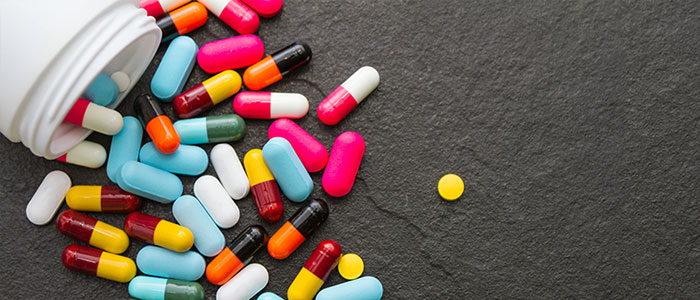
Before we go into the details of the Pharma tablet manufacturing process, it is essential to know the technical definition of the tablet. In the pharmaceutical jargon, a tablet is a dosage form comprising of a mixture of active substances and excipients in the powder form.
The ingredients pass through a series of processes and get compacted into a solid dose.
The excipients are:
The disintegrators are added to help break up the tablet into the digestive tract. Sometimes, sweeteners or flavors are added to make the tablet palatable. Polymer coating makes the swallowing easy and also controls the release rate of an active ingredient. It makes the tablet more environment resistant.
The method used depends on various factors such as the size of the particles of a therapeutic agent, its compression properties and chemical stability, and so on.
Wet granulation
It is the most commonly used process. Water is a common granulation fluid. The therapeutic agents must remain stable in the process. Wet granulation shows mechanical properties that ate to be exposed during the next operation processes, such as film coating. The choice and type of the binder, its concentration, and type and volume of the granulation fluid affect the quality of end products.
Also, because of the number of unit operations, tablet manufacturing by wet granulation is not considered efficient.
Dry granulation
When the ingredients are sensitive to the moisture, and they can’t withstand high temperatures, or when the ingredients do not have sufficient cohesive properties, dry granulation process is used. Popular tablets manufactured by this process are aspirin, aspirin combinations, etc. Diluents or fillers are starch, anhydrous lactose, basic calcium phosphate, and starch. Lubricants used are stearates and stearic acid. Talc and colloidal silicon dioxide are glidants.
Direct compression
We and dry granulation processes follow a series of unit operations. They are costly and time-consuming. Powder mixing and subsequent compression obviate the need for the granulation process. Therefore, it is called direct compression. The mechanism of the particle to particle interaction used by this process is similar to those operatives in the roller compaction and dry granulation processes.
Fillers used are spray-dried lactose, disintegrators are sodium starch glycolate, sodium stearyl fumarate, and so on. Talc and colloidal silicon dioxide are commonly used glidants. This is the process of manufacturing pharmaceutical tablets in general. The actual process may vary slightly.
Also, Read:
Granulation & It’s Importance In Tablet Manufacturing Process